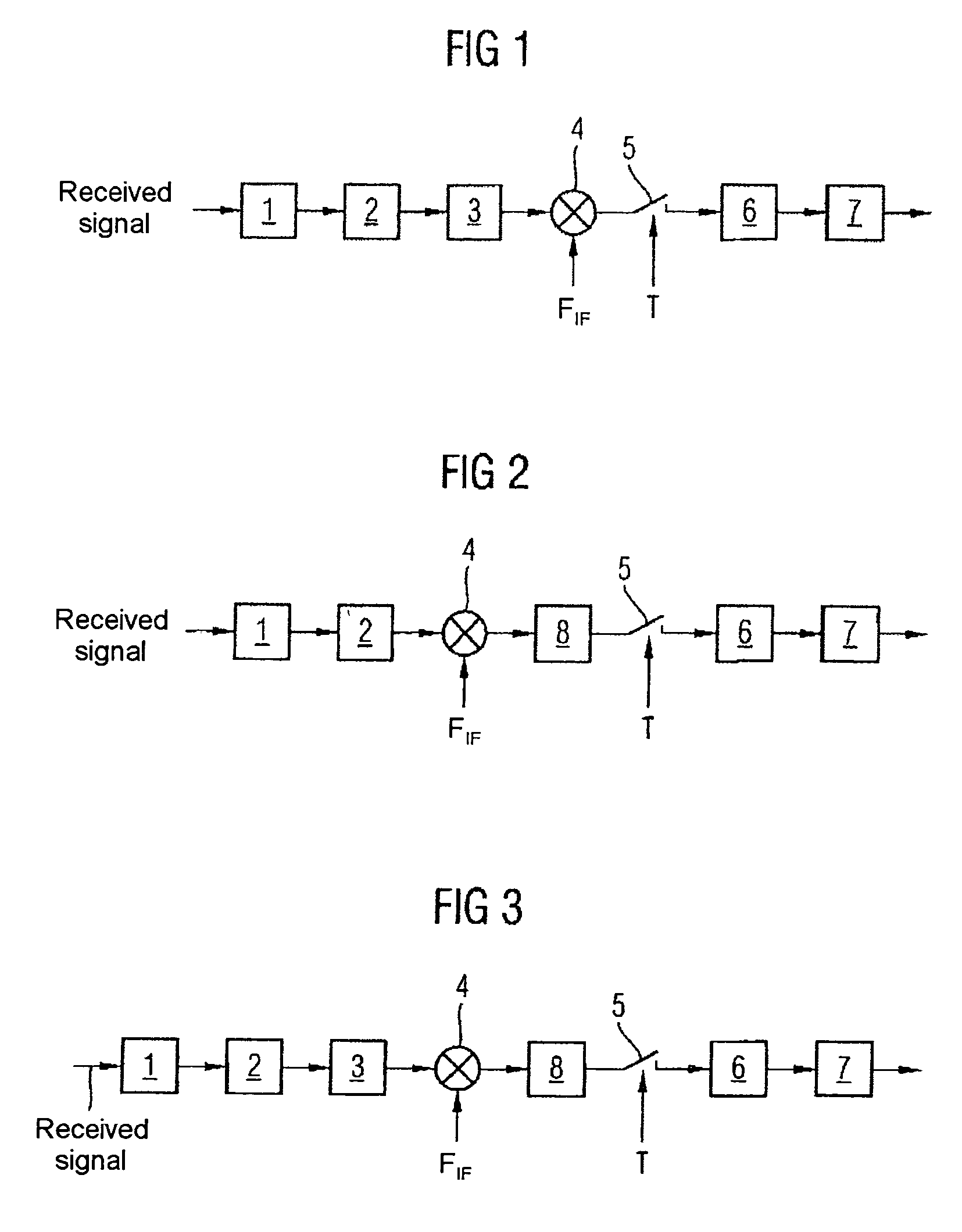Receiver for a wire-free communication system
a wire-free communication and receiver technology, applied in the field of wire-free communication systems, can solve the problems of severe loss of performance in comparison to linear (ideal) receivers, distortion of transmission signals, and noise, and achieve the effect of reducing power consumption, reducing noise, and improving performance of receivers with limiting devices
- Summary
- Abstract
- Description
- Claims
- Application Information
AI Technical Summary
Benefits of technology
Problems solved by technology
Method used
Image
Examples
Embodiment Construction
[0045]FIG. 1 shows a first exemplary embodiment of a receiver according to the invention, which has a matched pre-filter 1, an analogue / digital converter 2, a phase reconstruction device 3, a frequency conversion device 4, a sampling device 5, a mapping device 6 and a differential detection device 7. The analogue / digital converter 2 is a limiter or a limiting device followed by a sampler. The frequency conversion device 4 is preferably a mixer.
[0046] The pre-filter 1 is used to band-limit a received signal, which is being converted to an intermediate frequency, at one of its inputs, and to carry out the channel selection process. The pre-filter 1 reduces the performance loss that has been mentioned for digital modulation methods with more values. The pre-filter 1 preferably has a root-cosine characteristic when the pulse shaping in a transmitter is carried out by means of a root-cosine filter (matched filter). An output signal from the matched filter is preferably sampled at multip...
PUM
 Login to View More
Login to View More Abstract
Description
Claims
Application Information
 Login to View More
Login to View More - R&D
- Intellectual Property
- Life Sciences
- Materials
- Tech Scout
- Unparalleled Data Quality
- Higher Quality Content
- 60% Fewer Hallucinations
Browse by: Latest US Patents, China's latest patents, Technical Efficacy Thesaurus, Application Domain, Technology Topic, Popular Technical Reports.
© 2025 PatSnap. All rights reserved.Legal|Privacy policy|Modern Slavery Act Transparency Statement|Sitemap|About US| Contact US: help@patsnap.com


